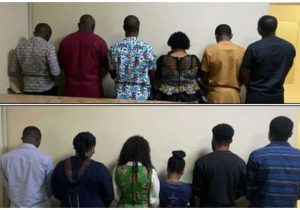Employee and company resiliency may be strengthened by allowing employees to work remotely during natural disasters and other events that cause workplace displacement, according to a research team from Texas A&M University’s School of Public Health.
The team, which included Kamrie Sarnosky, Mark Benden, Garett Sansom, Leslie Cizmas, and Annette Regan, analyzed ergonomic software data from 264 employees at a large oil and gas corporation in Houston, Texas. The company was forced to close its premises due to flooding caused by Hurricane Harvey during the study period, forcing workers to work remotely for an extended length of time.
Before, during, and after Hurricane Harvey, the researchers examined employee technology data. They discovered that, while total computer use decreased following the disaster, employees’ work patterns rebounded to pre-hurricane levels after a seven-month period of working remotely. This research implies that working from home has no negative influence on workplace productivity.
As a result of the COVID-19 pandemic, information workers have become increasingly accustomed to and interested in working remotely, according to this study, which was published in IOS Press in February.
“In the future, a larger percentage of the workforce will be engaged in office-style digital job activities,” said Benden, who also serves as director of the school’s Ergonomics Center. “Almost all of the study’s personnel quickly returned to their previous levels of output following Hurricane Harvey. Because we’re having national debates about whether or not employees should be able to work remotely or on a hybrid schedule, this is a major message for companies right now.”
This study is part of a bigger effort by the Ergonomics Center to look into the health of information workers. Information professionals are susceptible to injuries such as carpal tunnel syndrome, while appearing to be less physically demanding than blue-collar jobs. “The research suggests that if you labor in a certain style for a certain amount of time, you’re more likely to get wounded,” Benden explained. “However, if you work a little less or a little less frequently, or if you split up the time, or if you have certain other character traits — such as posture — you’re less likely to have a problem with your office work.”
This information, according to the Texas A&M researchers, can be utilized to promote healthy behaviors among employees, including those who work remotely, as well as to inform business policies. They’ll also keep track of how ergonomically friendly employees’ home offices are. The researchers believe that tracking this type of data can assist businesses in addressing remote employee health issues such as stress, depression, and substance abuse.
“The challenge was whether we could follow people and, instead of letting them stay in a poor environment, a bad habit, or bad conduct, could we give them a healthy nudge via the computer to tell them that it was time to take a walk or a break,” Benden explained. “We’re not very good at keeping track of time as humans, especially when we’re in the zone.” We need nudges and reminders that people respond to and that function really well to keep us from physically harming our bodies.”
Benden stated that taking breaks does not affect the quality of work performed by employees.
“Those who took the suggested breaks were more productive in general.” He stated, “They got more done.” “We need to learn about people, teach them about it, and then assist them in putting it into practice.”





































































































This Post Has One Comment
Pingback: Kwara State Slashes Workweek to Three Days for Public Employees – ngrDesk News – Breaking News, Nigerian News, Entertainment, Fashion and Styles, Sport, Business and Politics